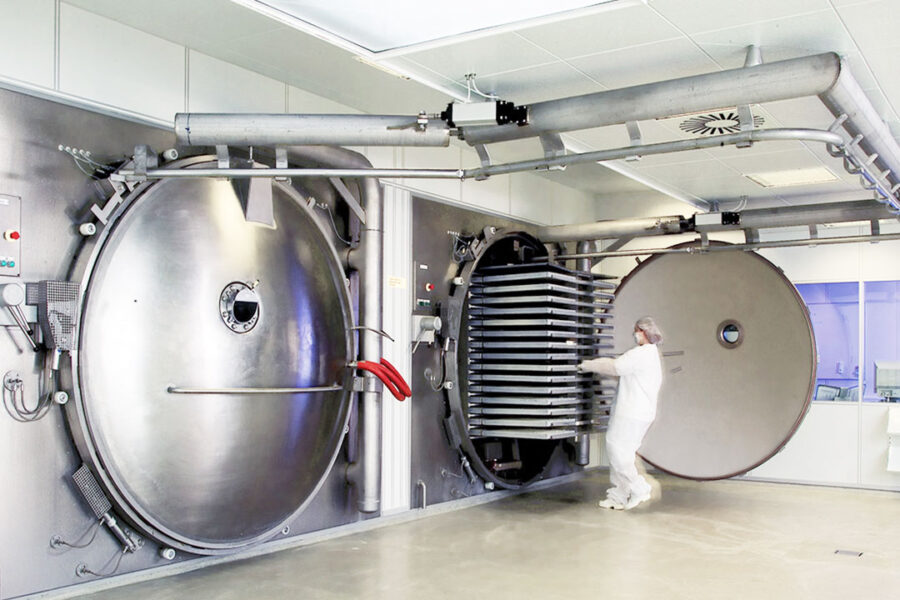Introduction to freeze-drying
Freeze-drying, also known as lyophilisation or cryodesiccation, is a cutting-edge preservation technology utilised in various industries. It involves freezing the material and then reducing the surrounding pressure to allow the frozen water in the material to sublimate directly from the solid phase to the gas phase. This method ensures the preservation of the material’s structure and composition while significantly extending its shelf life.
Historical development
The origins of freeze-drying trace back to ancient civilizations that used natural freezing and drying techniques to preserve foods. However, modern freeze-drying technology began to take shape in the early 20th century with the advent of vacuum pumps and refrigeration techniques. The technology gained prominence during World War II, when it was used to preserve blood plasma and penicillin, revolutionising medical preservation.
Basic principles of dehydration
Dehydration is the process of removing water from a substance, which is central to freeze-drying. In the freeze-drying process, the material is first frozen, and then the surrounding pressure is reduced. This enables the ice within the product to sublimate directly into vapour without passing through the liquid phase. The absence of liquid water prevents the degradation and microbial growth that usually occurs during normal drying processes.
Role of sublimation in preservation
Sublimation plays a critical role in the preservation achieved through freeze-drying. By transitioning directly from the solid to the gas phase, sublimation ensures that the structural and compositional integrity of the material is maintained. This is particularly crucial for preserving the delicate structures of foods and pharmaceuticals, which might be damaged by other drying methods.
Lyophilisation techniques
Modern lyophilisation techniques involve a series of stages, including freezing, primary drying (sublimation), and secondary drying (desorption). Each stage is meticulously controlled to optimize the preservation of the material. Innovations in lyophilisation have led to improved efficiency and reduced energy consumption, making the process more economical and environmentally friendly.
Cryodesiccation methods
Cryodesiccation, another term for freeze-drying, employs cryogenics to achieve the necessary low temperatures for freezing. State-of-the-art cryodesiccation methods incorporate advanced cryogenic cooling systems that ensure the rapid and uniform freezing of products, enhancing the quality of the preserved materials.
Vacuum implementation in process
Vacuum technology is integral to the freeze-drying process. The creation of a vacuum environment allows ice to sublimate effectively. Modern vacuum pumps and chambers are designed to maintain consistent pressure and temperature conditions, ensuring the efficiency and reliability of the freeze-drying process.
Applications in food industry
In the food industry, freeze-drying is utilised to preserve nutritional quality, flavour, and texture. It is extensively used for preserving fruits, vegetables, meats, and even ready-made meals. Freeze-dried products are lightweight, have a long shelf life, and can be easily rehydrated, making them ideal for consumer convenience and emergency rations.
Uses in medicine
Freeze-drying is indispensable in the pharmaceutical industry for preserving biologicals, vaccines, and other delicate medicines. It ensures the stability and efficacy of pharmaceuticals over extended periods, facilitating global distribution and storage. Freeze-drying is also used for preserving organ transplants and various medical specimens.
Future trends in technology
The future of freeze-drying technology looks promising, with ongoing advancements aimed at enhancing efficiency and sustainability. Research is focused on developing faster freeze-drying methods and reducing energy requirements. Integration of digital technologies, such as AI and IoT, is expected to further optimise process monitoring and control, paving the way for innovative applications in emerging fields like biotechnology and space exploration.



